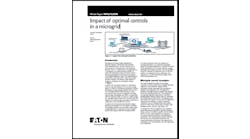Remember when powering your house with your vehicle was a wild idea?
A few years ago, the thought of using the batteries in electric vehicles (EVs) to provide vehicle-to-grid (V2G), vehicle-to-microgrid or vehicle-to-home power was just an idea, maybe even a wild idea.
Now these programs are inching toward reality, with Pacific Gas & Electric (PG&E), Snohomish Public Utility District (PUD), Consolidated Edison (Con Edison), Portland General Electric (PGE) and others moving forward with programs. The V2G and related efforts aim to improve utility customers’ resilience, meet the increased electricity demand because of booming EV use, integrate renewables and pave the way for EV owners to reap income. They also help utilities avoid building expensive and often fossil-fuel fired generating plants.
These benefits are expected to accrue because the batteries in EVs can be used for more than just charging a car. EVs with bidirectional chargers can charge a home or feed power to a microgrid or the grid.
“V2X (vehicle-to-everything) is emerging as the ‘must have’ feature for upcoming EVs. Certainly Nissan was an early adopter, and we have seen recent announcements from Ford and other automakers suggesting they see this future, too,” said Kevin Schwain, senior director, electric vehicles for EnergyHub, which provides distributed energy solutions.
But to make all this happen, utilities and other stakeholders need access to EVs capable of bidirectional charging and data that makes it possible to safely feed power to a grid or home. Also needed are new policies spurring utility V2G programs, plus incentives that compensate EV owners for lending their car batteries to the grid.
What the latest EVs offer
Meanwhile, car manufacturers are planning to release EVs that include bidirectional charging. To date, vehicles in the US that offer V2G capabilities include the Nissan Leaf and the Ford F-150 Lightning. One of the latest EVs is Hyundai’s Ioniq 5, which has the ability to provide vehicle-to-home charging but not V2G.
“Ioniq 5 can power 120 volt devices up to 1.9 kW,” said Ryan Miller, manager of electrified performance development at the Hyundai-Kia Technical Center. “You could power something like a single refrigerator for many days.” He noted that a customer could wire a critical load panel in the home to power a critical circuit during a power outage.
Put to the test by PG&E
While car manufacturers have been rolling out new cars capable of bidirectional charging, PG&E has been active in testing them. The company has much to gain from such programs.
Its territory is located in a wildfire-prone region of California and, in recent years, PG&E has implemented public safety power shutoffs to avoid having its equipment spark fires when the weather is dry or windy. V2G and vehicle-to-home programs could help customers keep the lights on during these outages.
PG&E’s early programs began in 2018 with a project funded by the California Energy Commission’s Electric Program Investment Charge. The utility tested charging and discharging homeowners’ EV batteries during demand response events under which the homeowners reduced their load, said Ari Vanrenen, spokesperson at PG&E. Also tested was the EVs’ ability to island from the grid, she said.
“Results successfully proved the EV-only vehicle-to-home system was able to supply the home during demand response events and power outages. It was also able to safely export to the grid in the vehicle-to-grid use case,” Vanrenen said.
The company learned that EVs add “significant incremental value when combined with stationary storage in long-term outage scenarios,” she said.
Now PG&E has numerous programs underway, including a project in which five SunRun and PG&E customers planning to buy Ford’s F-150 Lightning EVs will participate in a pilot. The F-150 Lightning and its Intelligent Backup Power bidirectional charging capabilities will be tested in providing backup power for customers’ homes in PG&E’s service area.
“The charger is considered a generation technology, similar to a home battery,” said Vanrenen. “Since it is a newer technology, we want to test how the charger and electric car interact with the grid, how it can provide backup power and want to make sure it’s a smooth experience.” The F-150 Lightning is expected to be available next month and can power a home for up to 10 days, depending on the home’s energy needs, she said.
PG&E is developing incentives for EV owners who support the grid, she added.
In addition, PG&E has partnered with General Motors (GM) to test potential vehicle-to-home opportunities in a lab. GM does not yet have a vehicle with bidirectional charging.
Vehicle-to-microgrid and vehicle-to-home pilots
PG&E also has proposals pending before the California Public Utilities Commission (CPUC) for four more vehicle-to-home and vehicle-to-microgrid projects, including:
- A residential pilot program targeted at spurring, through customer incentives, the adoption of bidirectional light-duty vehicles at single-family homes.
- A commercial pilot program that aims to spur, through customer incentives, the adoption of bidirectional medium- and heavy-duty vehicle fleets.
- A vehicle-to-microgrid pilot with a goal of enabling behind-the-meter bidirectional EVs to support community resiliency.
- A small-scale pilot aimed at exploring the value of EV discharge beyond the customer’s electricity meter in California Independent System Operator market services. The pilot would utilize bidirectional school buses.
Meanwhile, other utilities have projects underway.
Snohomish, PGE, Con Edison projects
Snohomish PUD is using two Nissan Leaf EVs in a V2G demonstration that integrates EVs, solar and battery storage into a microgrid. The goal is to look at the EVs’ ability to provide resiliency and help integrate solar, said John Glassmire, senior advisor, grid edge solutions at Hitachi Energy, which provided the microgrid.
PGE has a 6.8-kW V2G charger at the PGE Portland Service Center that’s been in operation for a few months. “Our engineers use this charger to test power flow between the grid and the battery,” said John Farmer, company spokesman. The company is conducting the test with a Nissan Leaf.
Take the Microgrid Knowledge Utility Survey and receive the results.
Con Edison is implementing a project in which a five-bus EV fleet provided by Lion Electric is being used by the White Plains, New York, school district. In December 2020, the buses began feeding power to Con Edison customers, which was the first time in the state that buses fed power into a utility grid.
In addition, a new partnership between electric mobility company Revel, clean energy developer NineDot Energy and vehicle-to-grid company Fermata Energy has a pilot program in Brooklyn, New York. Three Nissan Leaf EVs will provide power to Con Edison.
What’s needed
To move V2G forward, new incentives and policies are needed that allow EV owners to reap income. In some regions, demand response programs offer a way for EV owners to do that.
And software and data are needed to allow users to integrate V2G applications with time-of-use rates, demand charge mitigation and load management, said Patrick Macdonald-King, chief operations officer at EV Connect, which provides EV charging management solutions.
Data will be critical to V2G in a number of ways.
It’s important to capture and communicate the needs of the vehicle owner, information about the car – including charge status and grid conditions – and optimize these in “almost” real time, said EnergyHub’s Schwain. If EV owners want to get paid for a service, data will be needed to show that they provided the service.
“When I look at vehicle-to-home, this is a multiparty data sharing problem,” said Chris Kalima, vice president of product management at Intertrust, which helps data-driven businesses securely manage distributed data and devices across different stakeholders.
Stakeholders in the data-sharing process include auto manufacturers that can provide information about vehicle location, state of the battery and charging patterns. Additional stakeholders include companies with charging networks that can identify where the networks are located and the state of the networks, as well as utilities and distribution system operators who have information about the status of the grid and its assets or incentives available to customers, Kalima said.
Also needed will be a single standard for sharing the data, he added.
“As things scale out, there will be growing pains,” said Kalima.
With such challenges, V2G still has a long way to go before it is widely implemented. But given the benefits of providing resilience, backup power, grid services and the ability to integrate renewable energy, there’s much interest in the technology.
“V2G is cool and a new asset,” said Hitachi’s Glassmire. “It’s something else we can leverage to have flexibility in meeting the challenges of the future.”
Track news about EVs and microgrids. Subscribe to the free Microgrid Knowledge Newsletter.








